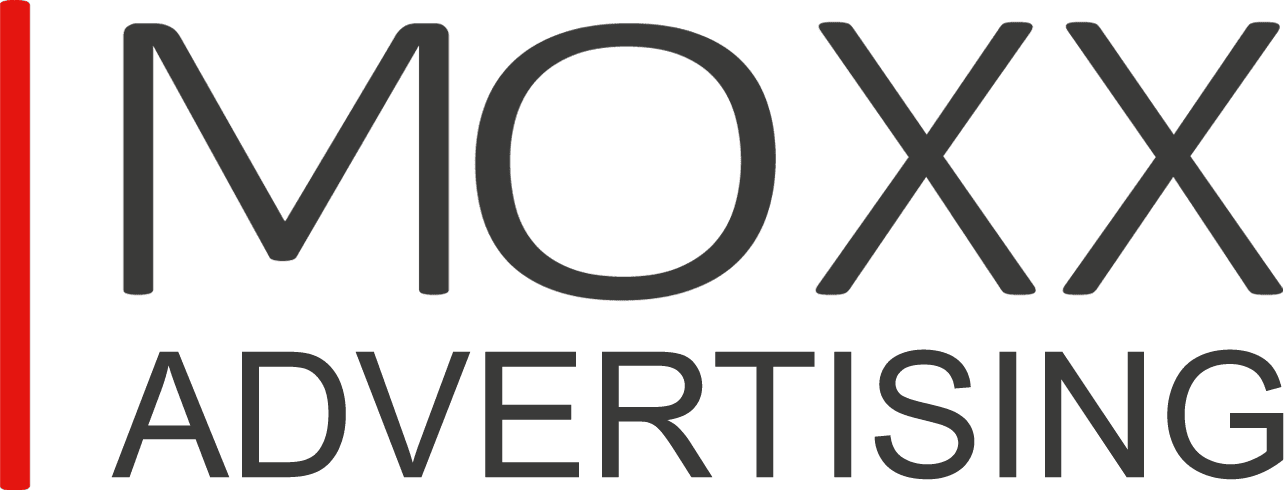The widely used abbreviation SEO stands for “Search Engine Optimisation.” In simple terms, SEO is the practice and processes of enhancing your website to increase its visibility on the most popular search engines: Google, Bing, Yahoo, and others that are not as well-known. The goal for website owners is to become visible to potential users and customers without having to pay for advertising on the respective platforms.
The better the visibility of your pages in search results, the more likely they are to be found and clicked. Ultimately, the goal of search engine optimisation is to help attract website visitors who will convert into customers, users, or an audience that continues to return. This is achieved through:
- specific products intended for online sales.
- provided services.
- in-depth information on topics of interest to a specific audience.
What will you learn in this guide?
We will try to cover the most essential and current topics related to SEO, and you can read them according to your current interests. Broadly speaking, you will learn:
- How SEO differs from SEM and PPC.
- Why SEO is important.
- Types of SEO and specialisations.
- How SEO works.
Let the journey into this in-depth SEO guide begin!
Table of contents
How does SEO differ from SEM and PPC?
In the world of digital marketing, there are often three-letter abbreviations representing specific activities. We’ve clarified what SEO is, but have you heard of SEM and PPC? These are two other frequently encountered terms that you’ll come across whether you’re looking to become a user of the service, starting to study it, or just have a general interest in the world of digital marketing.
SEM stands for Search Engine Marketing or, as it is more commonly known, search marketing.
Search marketing SEM is a comprehensive term for the combination of SEO and PPC activities designed to stimulate traffic through organic and paid search.
In other words, search marketing is the process of obtaining traffic and visibility from search engines through both paid and unpaid efforts. The method is developed to achieve greater efficiency in specific campaigns to cover the shortcomings of organic and paid services related to promoting a brand, product, service, or information.
So, how does SEO differ from SEM? Technically, they don’t differ—SEO is just half of SEM:
- SEO – attracting organic traffic from search engines.
- SEM – attracting organic and paid traffic from search engines.
Here comes the reasonable question: “Why do I need paid search when there’s a service that will make my site visible to users?” The point is that the online world is an extremely competitive field where you have to do everything possible to climb one spot higher than your direct competitors.
This is why many people are already using SEM and seemingly underestimate SEO.
Here’s the best way to think about SEM. Imagine SEM as a coin. SEO is one side of this coin, and PPC (pay-per-click) is the other side.
It’s important to note the meaning of the PPC abbreviation: pay-per-click—a form of digital marketing where advertisers are charged each time someone clicks on one of their ads.
In essence, advertisers bid on specific keywords or phrases for their ads to appear in search results. When a user searches for one of those keywords or phrases, the advertiser’s ad will appear among the top results.
So, if we think about search marketing as a coin, SEO and PPC are the two sides of the same coin—SEO is the unpaid side, and PPC is the paid side.
Another key point: it’s essential never to think of it as “SEO vs. PPC” (i.e., which one is better) because these are complementary channels. It’s not an “either-or” question—choose both for faster and high-quality results (as long as your budget allows).
As mentioned earlier, the terms SEM and PPC are used interchangeably in the IT world. But as educated potential users of the service, do not make this mistake; rely on this: when someone says SEM, it’s because both SEO (organic search) and PPC (paid search) are meant.

Why is SEO important?
SEO is a crucial marketing channel. Firstly, organic search provides about 50% of the total website traffic and even exceeds this figure. This is one of the major reasons why the global SEO industry is predicted to reach a staggering $122 billion by 2028.
SEO leads to tangible business results for brands, companies, and organisations of all sizes. Every time people want to go somewhere, do something, find information, research, or buy a product/service, their journey usually starts with a search.
However, today’s search is highly fragmented. Users can search on traditional search engines like Google, Bing, and Yahoo; on social platforms (e.g., YouTube, TikTok); on social networks like Facebook or Instagram; or on retail websites like Amazon, eBay, or local online stores.
On a global scale, 51% of online shoppers in the US start their product search on Amazon, compared to 49% who start with a search engine like Google. The same study notes the following:
20% start on YouTube.
19% start on Facebook.
15% start on Instagram.
11% start on TikTok.
But these are continually changing results. The landscape is much more dynamic because there are processes that change searches and consumer moods. Every year, they perform trillions of searches.
Thus, search becomes the primary source of traffic for websites, making it crucial to be “search-friendly” on every platform where people can search for your brand or business.
All of this means that improving your visibility and ranking higher in search results than your competitors can have a positive impact on your end results.
SEO is also crucial because search engine results pages (SERPs) are highly competitive—filled with search features (and PPC ads). SERP features include:
Basic informational panels:
- Recommended snippets of information.
- Infographics.
- Images.
- Videos.
- Top stories (news).
- Questions and answers.
- Carousels.

Another reason why SEO is crucial for brands and businesses, compared to other marketing channels, is that quality SEO work creates sustainability. When a paid campaign ends, the traffic also ends. Social media traffic is, at best, unreliable and a small part of what it used to be.
SEO is at the core of holistic marketing, where everything your company does matters. Once you understand what your users want, you can apply this knowledge to create:
- Advertising campaigns (both paid and organic).
- Website content.
- Social media campaigns.
SEO is the channel that provides the traffic you need to achieve key business goals: conversions, visits, sales, visibility, and popularity. It also builds trust – a website that ranks well is usually considered authoritative or reliable, and these are key elements that Google rewards with better rankings.
Types of SEO
There are three types of SEO:
Technical SEO: Optimising the technical aspects of a website.
On-Page SEO: Optimising the content of a website for users and search engines.
Off-Page SEO: Creating brand assets (such as people, brands, values, vision, messages, colors, attracting words) and doing things that will ultimately improve the brand’s awareness and recognition (i.e., demonstrate and increase its expertise, authority, and reliability) and generate search.
As clients and users of the service, you retain 100% control over the content and technical optimisations. This is not always true for off-site optimisation (you cannot control links from other sites or if the platforms you rely on are ultimately closed or undergo significant changes), but these activities are still a key part of this trio of success in SEO.
Imagine SEO as a sports team. To win, you need both a strong defence and offence – and fans (i.e., an audience). Think of technical optimisation as your defence, content optimisation as your offence, and off-site optimisation as ways to attract, engage, and retain a loyal fan base.
Technical optimisation
Optimising the technical elements of a website is crucial for the success of SEO.
It all starts with architecture – creating a website that can be crawled and indexed by search engines. You want to make it easy for search engines to discover and access all the content on your pages (i.e., text, images, videos). What technical elements matter here: URL structure, navigation, internal links, and more.
Experience is also an important element of technical optimisation. Search engines emphasise the importance of pages that load quickly and provide a good user experience. Elements like Core Web Vitals, mobile-friendliness, HTTPS, and avoiding intrusive interstitials within the site – all matter for technical SEO.
Another area of technical optimisation is structured data (also called schema). Adding this code to your website can help search engines better understand your content and improve your appearance in search results.
Additionally, hosting services, content management systems (CMS), and site security – all play a role in SEO.

Content optimisation
In content optimisation on your website, you need to optimise for two main audiences: people and search engines. This means optimising the content that your audience will see (what is actually on the page) as well as what search engines will see (the code).
The goal is always to publish useful, high-quality content. You can achieve this through a combination of understanding the desires and needs of your audience, data, and guidance provided by data collection platforms.
When optimising content for people, you need to ensure that it:
- covers relevant topics that you have expertise or knowledge in.
- includes keywords that people would use to find the content.
- contains a unique or original presentation of the product or service.
- is well-written and free of grammatical and spelling errors.
- is up-to-date and contains accurate information.
- includes multimedia (e.g., images, videos).
- provides a better informational base than your competitors in SERP.
- facilitates readability, structured in a way that makes it easy for people to understand the information you’re sharing.
For search engines, some key elements of content that need optimisation include:
- Heading tags.
- Meta description.
- Heading tags (H1-H6).
- Alt text for images.
- Open graph and Twitter Cards metadata.

Off-page / Link building optimisation
There are several activities that may not be strictly “SEO” in the narrowest sense, but can still align and indirectly contribute to SEO success.
Link building (the process of acquiring links to a website) is an off-page activity most closely associated with SEO. Acquiring a diverse set of links directed to your website from relevant, authoritative, and trustworthy sites can bring significant benefits, such as improved rankings and increased traffic. Quality of links surpasses quantity, with the goal being a large number of high-quality links.
How do you obtain these links? Various methods for website promotion combine with SEO efforts, including:
- Brand building and marketing: Techniques aimed at increasing brand awareness and reputation.
- PR (Public Relations): Techniques for building relationships with the public to gain editorially given links.
- Content marketing: Popular forms include creating videos, ebooks, surveys, podcasts (or guesting on other podcasts), and publishing guest interviews.
- Social media marketing and optimisation: Establishing the brand on all relevant platforms, optimising it fully, and sharing appropriate content.
- Listings management: Claiming, verifying, and optimising information on all platforms where your company or website information may be included and found by searchers (e.g., directories, review sites, questionnaires, etc.).
- Reviews and ratings: Obtaining, monitoring, analysing, and responding to them.
In general, when it comes to Off-page optimisation outside the site, it involves activities that may not have a direct impact on your ability to rank from a purely technical standpoint.
However, once again, everything your brand does matters. You want your brand to be discovered everywhere people may search for you. In this sense, some people try to rename “search engine optimisation” to actually mean “search experience optimisation” or “search everywhere optimisation.” That is, interpreting SEO differently based on the phenomenon, which entirely depends on user preferences.
SEO specialisations
Search engine optimisation also has several sub-genres. Each of these areas differs from “regular SEO optimisation,” usually requiring additional tactics and posing different challenges.
E-commerce SEO: Additional elements of SEO include optimising category pages, product pages, faceted navigation, internal linking structures, product images, product reviews, schema, etc.
Enterprise and large-scale SEO: This is SEO on a massive scale. Typically, this involves working with a website (or multiple websites/brands) with over 1 million pages or may be based on the size of the organisation (usually those generating millions or billions in revenue annually). Enterprise activity usually means delays in implementing SEO changes from the development team, as well as involvement of multiple stakeholders.
International SEO : This is global SEO for international businesses—performing SEO for multi-regional or multilingual websites—and optimising for international search engines like Baidu or Naver.
Local SEO : Here, the goal is to optimise websites for visibility in local organic search results through managing and getting reviews and business listings, among other activities.
News SEO: Speed is of the essence in news. Specifically, making sure you enter Google’s index as quickly as possible and appear in places constructed according to the dynamics of daily events in the world of business, news, and information. Understanding best practices for paywalls, sections pages, news-specific structured data, and more is necessary.
How does SEO work?
If you found this page through a Google search, you’ve probably Googled “what is SEO?” You’ve chosen one of the results you’ve seen at the top of the first search page. In other words, someone has taken steps in SEO to make this article visible to people searching for information on the topic.
In simpler terms, specialists who have taken specific steps in SEO have helped this guide gain a good reputation among search engines, which has helped it rank high in the search.
But let’s look at SEO more broadly. In general, SEO really works through a combination of:
- People: The person or, more commonly, the team responsible for strategist, tactically, and operationally handling SEO.
- Processes: Actions taken to enhance work efficiency.
- Technologies: Platforms and tools used.
- Activities: The end product or result.
Many other things influence how SEO works. What follows is a high-level overview of the most important elements of knowledge and the process. Six critical areas, in combination, make SEO effective:

Understanding search engine operations
When you want people to find your business through search—on any platform—you need to understand the technical processes behind search engine operations and ensure you provide all the right “signals” to influence that visibility.
When talking about traditional web search engines like Google, there are four distinct stages of search:
- Crawling: Search engines use crawling devices to discover web pages by following links and using site maps.
- Rendering: Search engines generate how the page will look using information from HTML, JavaScript, and CSS.
- Indexing: Search engines analyse the content and metadata of discovered pages and add them to a database (although there’s no guarantee that every page on your website will be indexed).
- Ranking: Complex algorithms consider various signals to determine if a page is relevant and of high enough quality to be displayed when searchers enter a query.
But optimising for Google search differs from optimising for search on other platforms like YouTube or Amazon. Take Facebook, for example, where factors like engagement (likes, comments, shares, etc.) and who people are connected to matter. Then, on Twitter, signals like repeatability, interactions, or author authority are important.
And to further complicate things: search engines have added machine learning elements to surface content—making it even harder to say that “this” or “that” has led to better or worse performance.
Planning
Research is a crucial part of SEO. Some forms of research that will enhance the effectiveness of SEO include:
- Audience research: It’s essential to understand your target audience or market. Who are they (i.e., their demographic and psychographic data)? What are their pain points? What questions do they have that you can answer?
- Keyword research: This process helps you identify and incorporate relevant and valuable search terms into your pages that people use. It also helps you understand the search volume and competition for ranking on these keywords.
- Competitor research: What are your competitors doing? What are their strengths and weaknesses? What types of content do they publish?
- Brand/Business/Client research: What are their goals, and how can SEO help them achieve these goals?
- Website research: Different SEO audits can reveal opportunities and issues on the website that hinder success in organic search. Some audits to consider are technical SEO , content audit, link profile analysis, and E-A-T (Expertise, Authoritativeness, Trustworthiness).
- SERP analysis: This will help you understand the search intent for a given query (e.g., whether it’s commercial, transactional, informational, or navigational) and create content more likely to win rankings or visibility.
Research
Your SEO strategy is your long-term action plan. You need to set goals and plan how to achieve them.
Think of your SEO strategy as a roadmap. The path you take will likely change and evolve over time, but the destination should remain clear and unchanged.
Your SEO plan may include the following:
- Setting goals (e.g., OKRs, SMART) and expectations (i.e., deadlines/stages).
- Defining and aligning significant key performance indicators (KPIs) and metrics.
- Deciding how projects will be created and executed (internal, external, or a combination).
- Coordinating and communicating with internal and external stakeholders.
- Choosing and implementing tools/technologies.
- Hiring, training, and structuring the team.
- Defining the budget.
- Measuring and reporting results.
- Documenting the strategy and the process.
Creation and implementation
Once all the research is done, it’s time to turn ideas into actions. This involves:
Creating new content. Consult with your content team on what content needs to be created.
Recommendation or implementation of changes or improvements to existing pages. This may include updating and enhancing content, adding internal links, incorporating keywords/themes/topics, or identifying other ways for additional optimisation.
Removing old, outdated, or low-quality content. Content types that don’t rank well, don’t lead to traffic conversion, and don’t help you achieve your SEO goals.
Monitoring and maintenance
You need to know when something goes wrong or breaks on your website. Monitoring is crucial.
You should know if traffic to critical pages decreases, pages become slow, unresponsive, or drop out of the index, your entire website goes offline, links are broken, or any number of potential catastrophic issues.
Analysis, evaluation, and reporting of performance
If you’re not measuring SEO , you can’t improve it. To make data-driven decisions for SEO, you’ll need to use:
Website analytics to set up and utilise tools (at a minimum, free tools like Google Analytics, Google Search Console, and Bing Webmaster Tools) to gather performance data.
Tools and platforms. There are many all-in-one platforms (or packages) that offer multiple SEO tools, but you can also choose to use selected SEO tools to track the performance of specific tasks. Alternatively, if you have resources and none of the tools on the market do exactly what you want, you can create your own tools.
After gathering the data, you’ll need to report on progress. You can create reports using software or manually.
Performance reports should tell a story and be made at significant intervals, usually in comparison to previous reporting periods (e.g., year-over-year). This depends on the type of website (usually monthly, quarterly, or some other interval).


